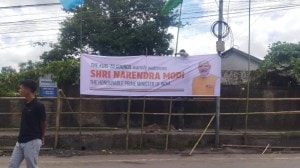Bear hunt in the stock market
How can regulators detect presence of a bear cartel in a stock market where prices keep fluctuating?
In the recent past there have been reports in the financial press that the Securities and Exchange Board of India is investigating whether a bear cartel existed and the role it may have played in the accompanying stock market crash. One such instance was on February 25 this year when a dozen mid-cap and small-cap shares plunged with a drop of up to 62 per cent. The Sebi is apparently seeking to determine whether a group of investors acted to bring down the prices of specific stocks by selling them in concert with the intention of buying the stocks later at the artificially lowered prices.
Retail investors who bought the alleged targeted stocks during the downward spiral might be wondering why Sebi is investigating to see whether the bear cartel existed. There would obviously be a transfer in wealth from retail investors who were long in the targeted stocks to the alleged cartel members who may have taken a short position. More importantly,in the presence of cartels stock price loses value is an indicator of a public companys fundamentals which in turn raises the risks involved in trading for retail investors.
An important question is how can regulatory authorities detect the presence of a bear cartel in an active stock market where prices fluctuate continually? There are no cookie-cutter prescriptions or simple tests. The key element underlying analyses to detect if there is cartel behaviour is to develop a control group of stocks that would not have been influenced by the cartel and compare their performance to the stocks subject to the cartels influence.
For example,if the industry under scrutiny was clearly competitive in an earlier time period,time could be used to construct a control group. Alternatively,firms in the industry that are not part of the cartel can be used as the control group. Identification of control groups can be facilitated by an understanding of how a cartel deals with typical operational problems.
Interestingly,the first problem that a cartel has to deal with is how to prevent cheating by its members. Since the agreement amongst cartel members cannot be enforced by courts structuring the cartel to make cheating unprofitable is perhaps the most effective manner of enforcing compliance. Cheating can be made unprofitable through fines,expulsion,retribution,or at worst,dissolution of the cartel. The scope for potential punishment is particularly credible when there is repeated interaction (in time,geographically,or product space) and there is some way to monitor behaviour.
A second operational problem for a cartel is development of a rule for dividing cartel profits. Clearly the division should be such that a cartel member should make higher profits inside rather than outside the cartel. Since the latter is essentially counterfactual,the rule for dividing spoils is less than obvious.
A similar non-cartel firm can be used as a benchmark. Alternatively,territorial assignments or market shares are also used as criteria to divide profits
Third,new circumstances arise in an industry continually and a cartel has to determine how to deal with this changed environment when communication amongst the members must be limited to prevent disclosure of the cartels existence. Entry is one such issue especially if the cartel is making high profits.
Finally,there is always the possibility that a cartel member reports the cartel to regulatory authorities. Several countries have set-up laws that grant incentives to the first cartel member who comes forward and confesses.
An illustration is provided in the context of the alleged bear cartel in November 2010 which resulted in a precipitous drop in the stock market from its November 4,2010 peak. Press reports note that small-cap,mid-cap and infrastructure stocks were targeted,and that 25 brokerage firms,FIIs and mutual funds are being investigated. The non-inclusive nature of the purported cartel vis-à-vis stocks and non-retail investors suggests analysis where stocks/entities that are not part of a cartel serve as standards for comparison.
I performed one such analysis using Sensex as a control group and Sensex Midcap,Sensex Smallcap,and CNXInfra (infrastructure index reported by the National Stock Exchange) as representative of stocks that were allegedly impacted by cartel behaviour while at the same time noting that not all the stocks in these indexes were affected by cartel behaviour.
Sensex is likely to have a long-term relationship with Midcap,Smallcap,and CNXInfra to the extent that all these index series are impacted by macroeconomic events. However,any cartel activity would change this relationship post-November 4,2010 which is when the bear cartel is alleged to have been active. Indeed Panel 1 which plots standardised closing prices reveals a distinct divergence between the behavior of Sensex and the other three indices Midcap,Smallcap and CNXInfra after this date.
The divergence is not absolute proof that a cartel did in fact exist,but is consistent with the influence of a cartel on the stock. It is one data point that can be used in making a determination of the existence of cartel activity.
Furthermore,the control group style analysis for detecting bear cartels can be extended to detect other forms of market manipulation.
The Sebi is investigating whether the spike in Infosys stock price on May 31 might have been the result of insider trading ahead of the public news release on the following day regarding the reappointment of NR Narayana Murthy as its executive chairman.
Control group analysis could proceed by comparing metrics like stock returns and volumes,derivatives volume and call-put imbalance across a time window (say 100 days) for this news event with company-specific news releases by other companies in the tech sector. Previous releases of company-specific news by Infosys itself could be a control group as well.
The author is a consultant and
Adjunct Professor at New York University.
Views expressed are personal. samitasareen@gmail.com
Photos





- 01
- 02
- 03
- 04
- 05


























